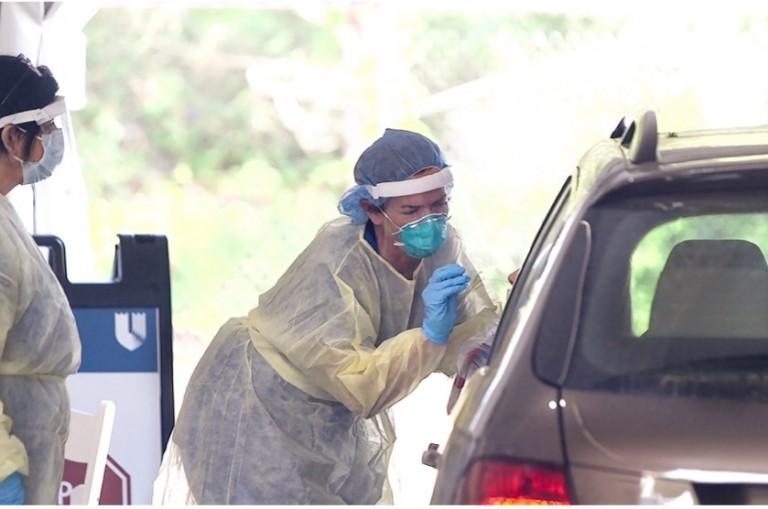
In many ways, the COVID-19 pandemic forced positive changes in how medicine is practiced in communities and at academic medical centers, with Family Medicine departments working at the front lines to provide care and forge relationships with community partners, according to a Duke Health review.
Publishing in the Journal of the American Board of Family Medicine, study authors detail measures taken by Duke’s Department of Family Medicine & Community Health (FMCH) that were indicative of the types of responses occurring throughout the country during the COVID-19 pandemic – many of which have staying power.
 Anthony Viera, M.D.
Anthony Viera, M.D.“The department was deeply integrated with many parts of the university and health system, so it could respond to the pandemic as needs unfolded,” said first author Anthony Viera, M.D., chair of FMCH at Duke. “Even before the pandemic, family medicine departments like ours worked closely with student health, employee health, family medicine, Physician Assistant programs and researchers. We had so many linkages that there were no parts of the pandemic we weren’t involved in.”
Viera and colleagues noted that the pandemic made clear the need to have coordinated action, based on shared information and resources, to meet the needs of patients, staff and students and communities.
Among the initiatives to manage the pandemic, the Duke FMCH department:
- Deployed virtual visits using telehealth for COVID-19 assessments and for non-COVID-19 care;
- Set up COVID-19 testing centers, including drive-through testing sites under tents;
- Forged new partnerships in student health to facilitate student care on campus and off, and provided quarantine support, travel advice, testing, vaccinations and other services;
- Established systems that enabled physician assistants, medical residents and retired nurses to assist with tracing, testing and vaccinations;
- Managed employee health cases and testing.
One of the biggest impacts of the pandemic was heightened awareness of the underlying socioeconomic inequalities borne of systemic racism. As health systems grappled with COVID-19, demonstrations arose throughout the country after the police killings of George Floyd and Breonna Taylor, fusing civil rights and social justice issues with the pandemic response. At Duke, those issues led to numerous changes.
“Systemic racism issues were interwoven with the pandemic, and the department had already been working to break down some of those barriers and raise awareness,” Viera said. “One common denominator was the importance of listening – listening to the community, to our students, to the health system and our partners in various leadership roles and working together in a collaborative way to solve problems as they unfolded.”
The department’s Director for Health Equity co-led the founding of a multi-stakeholder partnership, The Latinx Advocacy Team and Interdisciplinary Network for COVID-19 (LATIN-19). LATIN-19 grew to hundreds of members representing multiple organizations and partnerships throughout the community.
The group promoted scientific and health equity for the Latinx and other marginalized communities of color, working to set up testing, contact tracing, vaccinations, food distributions and other services.
While the partnerships developed rapidly, collaborations are likely to continue, potentially serving as the basis for deeper changes.
“The pandemic revealed the power of community partnerships, often including health care groups, as effective change agents in advocating for needed testing, protective equipment, as well as food and housing,” Viera said.
“When there’s a problem in the community and there is health inequity, the way to improve health for all is to help those who are suffering from inequity,” he said. “The lessons of the pandemic reach into the everyday care of people.”
In addition to Viera, article authors include J. Lloyd Michener, Jacqueline Barnett, Matthew Case, Carol Epling, Brian Halstater, Michelle Lyn, Viviana Martinez-Bianchi, John Ragsdale, Kenyon Railey, Kristen Said, Gregory Sawin, Hunter Spotts, John Vaughn and Nancy Weigle.
First published in Duke Health News